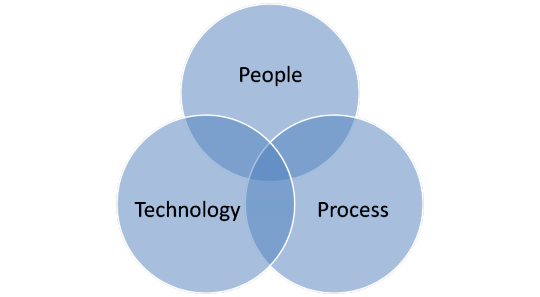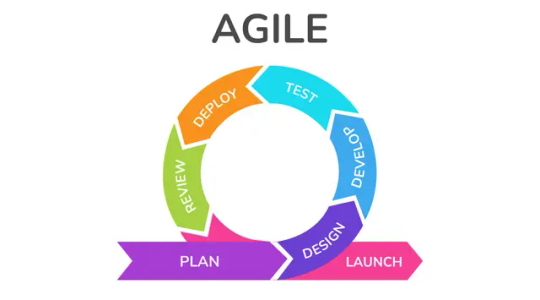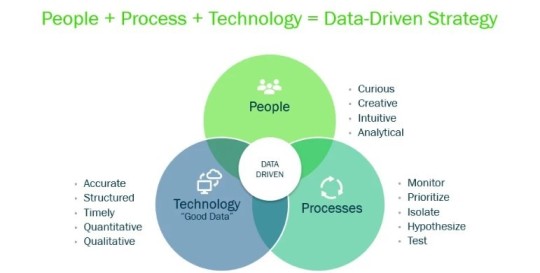Don't wanna be here? Send us removal request.
Text
Boosting Productivity Streamlining Turnaround Time Processes
In today's fast-paced business environment, organizations face increasing pressure to deliver results quickly and efficiently. Turnaround time, the duration it takes to complete a process from start to finish, is a critical factor in determining productivity and competitiveness. Organizations that can streamline their turnaround time processes not only enhance productivity but also improve customer satisfaction and overall performance. In this blog, we'll explore strategies for boosting productivity by streamlining turnaround time processes.

Understanding Turnaround Time Processes
Turnaround time processes encompass the series of steps and activities involved in completing a task, project, or service request. These processes can vary significantly depending on the nature of the task and the organization's industry and operational requirements. From order fulfillment and project management to customer service and administrative tasks, turnaround time processes are integral to organizational efficiency and effectiveness.
Identifying Bottlenecks and Inefficiencies
The first step in streamlining turnaround time processes is to identify bottlenecks and inefficiencies that may be causing delays. This requires a thorough examination of existing workflows, procedures, and resource allocation practices. Common bottlenecks may include manual handoffs, excessive paperwork, redundant approvals, and lack of automation. By pinpointing areas for improvement, organizations can develop targeted strategies to streamline their turnaround time processes and drive productivity gains.
Automating Routine Tasks
Automation is a powerful tool for streamlining turnaround time processes and reducing manual intervention. Organizations can leverage technology solutions such as workflow management systems, robotic process automation (RPA), and artificial intelligence (AI) to automate routine tasks, eliminate manual errors, and accelerate process execution. By automating repetitive and time-consuming activities, organizations can free up valuable time and resources to focus on higher-value tasks and strategic initiatives.
Standardizing Workflows and Procedures
Standardization is key to streamlining turnaround time processes and ensuring consistency and predictability in outcomes. Organizations should establish standardized workflows, procedures, and best practices that guide employees through each step of the process. Clear guidelines and documentation help minimize ambiguity, reduce errors, and facilitate smoother handoffs between departments and team members. By standardizing workflows and procedures, organizations can streamline operations and improve overall efficiency.
Implementing Lean Principles
Lean principles, derived from the Toyota Production System, emphasize the elimination of waste and continuous improvement in organizational processes. Organizations can apply lean principles such as value stream mapping, 5S methodology, and Kaizen to identify and eliminate non-value-added activities, streamline workflows, and optimize resource utilization. By adopting a lean mindset and culture, organizations can drive efficiency, reduce costs, and enhance turnaround time performance.
Empowering Employees
Empowering employees is essential for driving productivity and streamlining turnaround time processes. Organizations should provide employees with the training, tools, and resources they need to perform their jobs effectively and efficiently. Encouraging employee engagement, collaboration, and problem-solving empowers employees to take ownership of their work and contribute to process improvement initiatives. By fostering a culture of empowerment and accountability, organizations can harness the collective skills and expertise of their workforce to drive productivity gains and operational excellence.
Embracing Continuous Improvement
Continuous improvement is a fundamental aspect of streamlining turnaround time processes. Organizations should foster a culture of innovation, experimentation, and learning, where employees are encouraged to identify opportunities for improvement and implement innovative solutions. Regular performance monitoring, feedback mechanisms, and process audits enable organizations to track progress, identify emerging trends, and adapt to changing market dynamics. By embracing a mindset of continuous improvement, organizations can stay ahead of the curve and drive sustainable productivity gains over time.
youtube
Conclusion
In conclusion, streamlining turnaround time processes is essential for boosting productivity and driving organizational success. By identifying bottlenecks, automating routine tasks, standardizing workflows, implementing lean principles, empowering employees, and embracing continuous improvement, organizations can streamline their operations and achieve greater efficiency and effectiveness. In today's competitive business landscape, organizations that prioritize productivity and operational excellence are better positioned to succeed and thrive in the long term.
SITES WE SUPPORT
Workflow technology process - Wix
SOCIAL LINKS Facebook Twitter LinkedIn
0 notes
Text
Decoding Success Understanding the People-Process-Technology Nexus
In the realm of organizational success, the interplay between people, process, and technology forms a dynamic nexus that drives efficiency, innovation, and competitiveness. Known as the People-Process-Technology (PPT) nexus, this triad represents the cornerstone of modern business operations. In this blog, we delve into the intricacies of the PPT nexus, deciphering its significance and exploring how organizations can leverage it to unlock new levels of success.

The Role of People
At the heart of the PPT nexus lies the human element – people. Employees, stakeholders, and customers constitute the lifeblood of any organization, bringing diverse skills, experiences, and perspectives to the table. Engaged and empowered employees form the foundation of organizational success, driving innovation, collaboration, and customer satisfaction. Effective leadership, clear communication, and a supportive work culture are essential for nurturing a motivated and high-performing workforce.
The Importance of Process
Processes represent the operational workflows and procedures that govern how work is conducted within an organization. Streamlined and efficient processes enable organizations to optimize resource allocation, minimize waste, and deliver consistent results. From procurement and production to sales and customer service, well-defined processes ensure clarity, accountability, and alignment across departments and functions. Continuous process improvement methodologies such as Lean Six Sigma and Kaizen enable organizations to identify inefficiencies, eliminate bottlenecks, and drive operational excellence.
Leveraging Technology
Technology serves as an enabler within the PPT nexus, providing organizations with the tools and infrastructure needed to support and enhance their operations. From enterprise resource planning (ERP) systems and customer relationship management (CRM) software to cloud computing and artificial intelligence (AI), technology solutions offer opportunities to streamline workflows, improve decision-making, and enhance collaboration. By leveraging technology effectively, organizations can stay agile, responsive, and competitive in today's digital landscape.
Achieving Synergy and Integration
While each component of the PPT nexus plays a distinct role, their true power lies in their integration and synergy. Organizations that excel in business operations understand the importance of aligning people, process, and technology initiatives to achieve common goals and objectives. Cross-functional collaboration, communication, and coordination are essential for ensuring that all elements of the PPT nexus work together seamlessly to drive organizational success.
Building a Culture of Excellence
Building a culture of excellence requires a holistic approach that prioritizes the development of people, the optimization of processes, and the strategic adoption of technology. Organizations must invest in employee training and development, provide opportunities for collaboration and innovation, and foster a culture of continuous learning and improvement. By empowering employees to take ownership of their work, embrace change, and drive innovation, organizations can create a culture of excellence that fuels growth and success.
Embracing Change and Innovation
In today's rapidly evolving business landscape, organizations must embrace change and innovation to stay ahead of the curve. The PPT nexus provides a framework for organizations to adapt, innovate, and thrive amidst uncertainty and disruption. By fostering a culture of agility, resilience, and adaptability, organizations can leverage the collective power of people, process, and technology to navigate challenges, seize opportunities, and achieve sustainable growth.
youtube
Conclusion
In conclusion, the People-Process-Technology nexus represents a dynamic framework for organizational success in the digital age. By understanding the interconnectedness and interdependence of people, process, and technology initiatives, organizations can unlock new opportunities, drive innovation, and achieve lasting success. As organizations continue to navigate the complexities of modern business operations, embracing the PPT nexus enables them to build a culture of excellence, drive collaboration, and adapt to changing market dynamics with confidence and resilience.
SITES WE SUPPORT
Workflow technology process - Wix
SOCIAL LINKS Facebook Twitter LinkedIn
0 notes
Text
Agile at Work Transforming Workflows for Greater Flexibility
In today's rapidly evolving business landscape, agility has become a cornerstone of success. Organizations must adapt quickly to changing market conditions, customer preferences, and technological advancements to remain competitive. Agile methodologies, initially popularized in software development, have now permeated various industries, offering a flexible framework for transforming workflows and driving greater adaptability. In this blog, we delve into the concept of Agile at work and how it transforms workflows for greater flexibility and efficiency.

Understanding Agile Methodologies
Agile methodologies represent a set of principles and practices that prioritize flexibility, collaboration, and adaptability in project management and workflow processes. Unlike traditional linear approaches, Agile emphasizes iterative development, customer feedback, and continuous improvement. Agile methodologies enable teams to respond rapidly to changing requirements and deliver value incrementally, enhancing customer satisfaction and driving innovation.
The Core Principles of Agile
At the heart of Agile methodologies are four core principles outlined in the Agile Manifesto:
Individuals and interactions over processes and tools
Working software over comprehensive documentation
Customer collaboration over contract negotiation
Responding to change over following a plan
These principles emphasize the importance of people-centric approaches, iterative development, customer focus, and adaptability in achieving project success and driving business value.
Transforming Workflows with Agile
Agile methodologies offer a transformative approach to workflow management, enabling organizations to achieve greater flexibility, efficiency, and responsiveness. By breaking down complex projects into smaller, manageable iterations or sprints, Agile teams can prioritize work, adapt to changing priorities, and deliver value more quickly. Daily stand-up meetings, sprint planning sessions, and regular retrospectives facilitate communication, collaboration, and alignment among team members, driving greater efficiency and transparency.
Embracing Iterative Development
One of the hallmarks of Agile methodologies is iterative development. Instead of attempting to define all requirements upfront, Agile teams focus on delivering small, incremental releases of a product or project. These iterative cycles allow for rapid feedback from stakeholders, enabling teams to course-correct, refine their approach, and deliver value iteratively. By embracing iterative development, organizations can minimize risk, address uncertainties, and adapt to evolving requirements more effectively.
Fostering a Culture of Collaboration
Agile methodologies foster a culture of collaboration and empowerment within teams. Cross-functional teams are empowered to make decisions, share knowledge, and take ownership of project outcomes. By promoting open communication, trust, and accountability, Agile teams can leverage the diverse skills and perspectives of team members to solve complex problems and drive innovation. Regular feedback loops and retrospectives enable teams to reflect on their processes, identify areas for improvement, and drive continuous learning and growth.
Embracing Change and Adaptability
One of the key tenets of Agile methodologies is the ability to embrace change and adaptability. Agile teams prioritize responding to change over following a rigid plan, enabling them to pivot quickly in response to new information or emerging requirements. By fostering a mindset of adaptability, resilience, and experimentation, organizations can navigate uncertainty and complexity with confidence, seizing opportunities and mitigating risks in the process.
youtube
Conclusion
In conclusion, Agile methodologies offer a transformative approach to workflow management, enabling organizations to achieve greater flexibility, efficiency, and adaptability in today's dynamic business environment. By embracing Agile principles and practices, organizations can transform their workflows, drive collaboration, and deliver value to customers more effectively. As organizations continue to navigate the complexities of modern business operations, Agile methodologies provide a proven framework for driving innovation, responsiveness, and success in an ever-changing world.
SITES WE SUPPORT
Workflow technology process - Wix
SOCIAL LINKS Facebook Twitter LinkedIn
0 notes
Text
Optimizing Performance Strategies for Turnaround Time Enhancement
In the fast-paced world of business, turnaround time plays a pivotal role in determining operational efficiency, customer satisfaction, and overall performance. Turnaround time refers to the duration it takes for a process to be completed, from initiation to delivery. Organizations that can optimize their turnaround time not only enhance their competitiveness but also improve their ability to meet customer expectations and adapt to market demands. In this blog, we'll explore effective strategies for enhancing turnaround time and optimizing overall performance.

Understanding Turnaround Time
Turnaround time is a critical metric that reflects the efficiency and effectiveness of organizational processes. It encompasses various stages, including request submission, processing, and delivery of goods or services. By analyzing turnaround time metrics, organizations can identify bottlenecks, inefficiencies, and areas for improvement within their workflows.
Streamlining Processes
One of the most effective strategies for enhancing turnaround time is streamlining processes. Organizations must evaluate existing workflows, identify redundant steps, and eliminate unnecessary delays. By optimizing process flows, standardizing procedures, and automating repetitive tasks, organizations can minimize turnaround time and improve overall efficiency.
Implementing Automation
Automation is a powerful tool for enhancing turnaround time and optimizing performance. By leveraging technology solutions such as robotic process automation (RPA), workflow management systems, and artificial intelligence (AI), organizations can automate routine tasks, reduce manual errors, and accelerate process execution. Automation enables organizations to achieve greater consistency, scalability, and reliability in their operations.
Prioritizing Resource Allocation
Effective resource allocation is essential for optimizing turnaround time. Organizations must allocate resources strategically, ensuring that personnel, equipment, and materials are deployed efficiently to meet demand. By aligning resource allocation with business priorities and workflow requirements, organizations can minimize idle time, reduce bottlenecks, and enhance overall productivity.
Empowering Employees
Empowering employees is critical for driving performance improvement and enhancing turnaround time. Organizations should invest in training, skill development, and leadership opportunities to empower employees to make informed decisions, take ownership of their work, and contribute to process optimization initiatives. Engaged and motivated employees are essential drivers of organizational success and performance improvement.
Embracing Continuous Improvement
Continuous improvement is a fundamental principle for optimizing performance and enhancing turnaround time. Organizations must foster a culture of continuous learning, innovation, and feedback. By encouraging employees to identify opportunities for improvement, experiment with new ideas, and implement best practices, organizations can drive incremental performance gains and achieve sustainable improvements in turnaround time.
Leveraging Data Analytics
Data analytics plays a crucial role in optimizing performance and enhancing turnaround time. Organizations should leverage data-driven insights to monitor key performance indicators, identify trends, and make informed decisions. By analyzing historical data, organizations can identify patterns, predict future trends, and proactively address potential issues that may impact turnaround time.
youtube
Conclusion
In conclusion, optimizing performance and enhancing turnaround time are critical imperatives for organizations seeking to thrive in today's competitive business environment. By streamlining processes, implementing automation, prioritizing resource allocation, empowering employees, embracing continuous improvement, and leveraging data analytics, organizations can achieve significant improvements in turnaround time and overall performance.
As organizations embark on their journey to optimize performance, it is essential to prioritize strategic investments, foster a culture of innovation and collaboration, and remain agile and adaptable in response to changing market dynamics. By adopting a holistic approach to performance optimization and turnaround time enhancement, organizations can unlock new opportunities, drive operational excellence, and achieve sustainable growth in the long term.
SITES WE SUPPORT
Workflow technology process - Wix
SOCIAL LINKS Facebook Twitter LinkedIn
0 notes
Text
The Power Trio People, Process, Technology in Business Operations
In the landscape of modern business operations, success hinges on the harmonious integration of three critical elements: people, process, and technology. Often referred to as the "Power Trio," this interconnected framework forms the backbone of organizational efficiency, innovation, and competitiveness. In this blog, we explore the significance of each component within the Power Trio and how their synergy drives excellence in business operations.

The Role of People
People are the heartbeat of any organization, bringing skills, creativity, and dedication to the table. Employees, stakeholders, and customers constitute the human capital that fuels organizational success. From frontline workers to top executives, each individual contributes to the collective efforts of the organization. Engaged and empowered employees foster a culture of collaboration, innovation, and continuous improvement, driving organizational excellence from within.
The Importance of Process
Processes define how work gets done within an organization. They encompass the workflows, procedures, and methodologies that govern every aspect of business operations. Efficient and streamlined processes enable organizations to optimize resource allocation, minimize waste, and deliver consistent results. From procurement and production to sales and customer service, well-defined processes ensure clarity, accountability, and alignment across departments and functions.
Harnessing the Power of Technology
Technology serves as a catalyst for innovation and transformation in business operations. From automation and analytics to cloud computing and artificial intelligence, technological advancements have revolutionized the way organizations operate and compete in the digital age. Technology solutions streamline workflows, enhance decision-making, and empower organizations to stay agile and responsive to market changes. By leveraging technology effectively, organizations can unlock new opportunities, drive efficiency, and deliver value to customers and stakeholders.
Achieving Synergy and Integration
While each component of the Power Trio plays a crucial role individually, their true power lies in their integration and synergy. Organizations that excel in business operations understand the importance of aligning people, process, and technology to achieve common goals and objectives. Cross-functional collaboration, communication, and coordination are essential for ensuring that all elements of the Power Trio work together seamlessly to drive organizational success.
Building a Culture of Excellence
Building a culture of excellence requires a holistic approach that prioritizes the development of people, the optimization of processes, and the strategic adoption of technology. Organizations must invest in employee training and development, empower teams to take ownership of their work, and foster a spirit of innovation and creativity. Continuous process improvement methodologies such as Lean Six Sigma and Kaizen enable organizations to identify inefficiencies, eliminate waste, and drive operational excellence.
Embracing Change and Innovation
In today's rapidly evolving business landscape, organizations must embrace change and innovation to stay ahead of the curve. The Power Trio provides a framework for organizations to adapt, innovate, and thrive in the face of uncertainty and disruption. By cultivating a culture of agility, resilience, and adaptability, organizations can leverage the collective power of people, process, and technology to navigate challenges, seize opportunities, and achieve sustainable growth.
youtube
Conclusion
In conclusion, the Power Trio of people, process, and technology forms the cornerstone of business operations in the modern era. By recognizing the interconnectedness and interdependence of these elements, organizations can unlock new levels of efficiency, productivity, and competitiveness. As organizations strive to achieve excellence in business operations, they must prioritize the development of their people, the optimization of their processes, and the strategic adoption of technology. By harnessing the collective power of the Power Trio, organizations can drive innovation, inspire collaboration, and achieve lasting success in today's dynamic and ever-changing business environment.
SITES WE SUPPORT
Workflow technology process - Wix
SOCIAL LINKS Facebook Twitter LinkedIn
1 note
·
View note